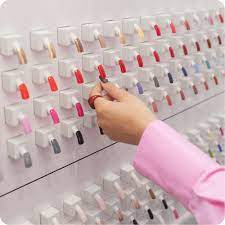What is a glosslab

A glosslab is a laboratory used to produce high-quality colorants and pigments. They are used in a variety of industries, including the food, textile, and cosmetics industries. A glosslab is an important part of any color-sensitive manufacturing process. By using a glosslab, companies can ensure that their products are consistent in color, brightness, and hue. This is especially important for products that must meet stringent regulatory requirements, such as pharmaceuticals and food products. A glosslab can be divided into two main categories: wet and dry. Wet labs use liquid solvents to dissolve the ingredients, while dry labs use airless spray technologies. Both types of labs offer advantages and disadvantages, but each has its own set of advantages and disadvantages when it comes to producing high-quality colorants and pigments. If you’re interested in becoming involved in the color industry, or simply want to keep your products consistent in color and quality, a glosslab is an essential part of your manufacturing process.
What is a glosslab?
A glosslab is a digital library that collects and organizes content from across the web. Glosslabs provide a centralized place for users to find and access information, making research easier and faster. Glosslabs are also great for finding new content to share with followers or for creating your own content.
Glosslabs: How They Work
Glosslabs are laboratories that use a variety of scientific techniques to study the surface properties and chemical reactions of materials. Glosslabs can be used to test the performance of new materials, or to improve the understanding of existing materials. Glosslabs can also be used to create new products or to improve the performance of existing products.
The primary purpose of a glosslab is to provide scientists with information about the surface characteristics and chemical reactions of materials. Glosslabs use a variety of scientific techniques, including scanning electron microscopy (SEM), x-ray photoelectron spectroscopy (XPS), and differential scanning calorimetry (DSC). By studying the surface properties and chemical reactions of materials using glosslabs, scientists can better understand how these characteristics affect material performance.
Glosslabs are important tools for testing the performance of new materials and for improving the understanding of existing materials. By studying surfaces using different scientific techniques, scientists can better understand how these surface characteristics affect material performance.
Glosslabs: What to Expect
A glosslab is a research lab that provides a unique environment for collaborative scientific research. Glosslabs are typically equipped with high-end computational and physical infrastructure, which allows scientists to conduct cutting-edge experiments in an easily accessible and collaborative setting.
According to the glosslab website, “a glosslab opens up opportunities for new ways of thinking about problems, by facilitating communication between researchers who work in isolation on different parts of a problem.” Glosslabs allow scientists from different backgrounds to come together and share their expertise, which can lead to breakthroughs in research.
Glosslab Advantages
A glosslab is a type of laboratory that performs chemical analyses using an automated system. Glosslabs are often used in businesses to test for potential contaminants in raw materials and products. In addition, glosslabs can also be used to test for contaminants in finished products.
One advantage of using a glosslab is that it eliminates the need for labor-intensive manual testing. This eliminates the possibility of human error and increases the accuracy and reliability of the results. Additionally, glosslabs are often equipped with state-of-the-art technology that allows them to perform complex tests quickly and accurately. This makes them ideal for detecting contaminants that may not show up on simpler tests.
Another advantage of using a glosslab is that they are often less expensive than traditional laboratories. This makes them an attractive option for small businesses who want to maintain high standards but don’t want to spend a lot of money on equipment and staff training. Finally, glosslabs are frequently staffed by experts who can help businesses solve complex contamination problems.
Glosslabs: Drawbacks
There are a few potential drawbacks to using glosslabs. First, glosslabs can be expensive. They can also require a lot of time and effort to set up, use, and maintain. Finally, glosslabs can be difficult to share with others.








